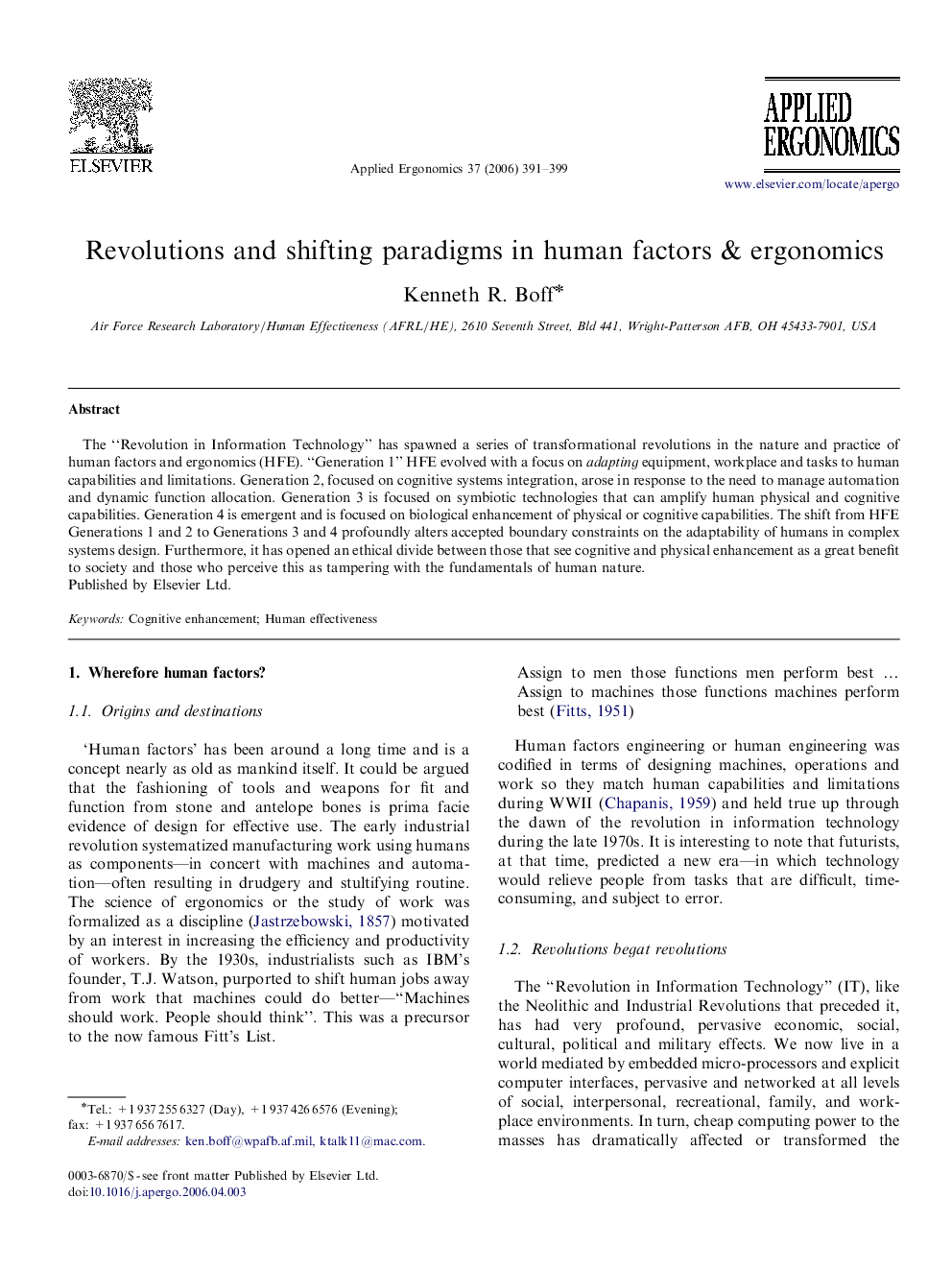| Article ID | Journal | Published Year | Pages | File Type |
|---|---|---|---|---|
| 550404 | Applied Ergonomics | 2006 | 9 Pages |
The “Revolution in Information Technology” has spawned a series of transformational revolutions in the nature and practice of human factors and ergonomics (HFE). “Generation 1” HFE evolved with a focus on adapting equipment, workplace and tasks to human capabilities and limitations. Generation 2, focused on cognitive systems integration, arose in response to the need to manage automation and dynamic function allocation. Generation 3 is focused on symbiotic technologies that can amplify human physical and cognitive capabilities. Generation 4 is emergent and is focused on biological enhancement of physical or cognitive capabilities. The shift from HFE Generations 1 and 2 to Generations 3 and 4 profoundly alters accepted boundary constraints on the adaptability of humans in complex systems design. Furthermore, it has opened an ethical divide between those that see cognitive and physical enhancement as a great benefit to society and those who perceive this as tampering with the fundamentals of human nature.
